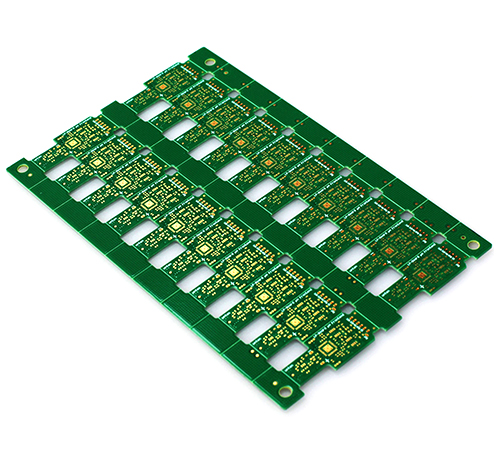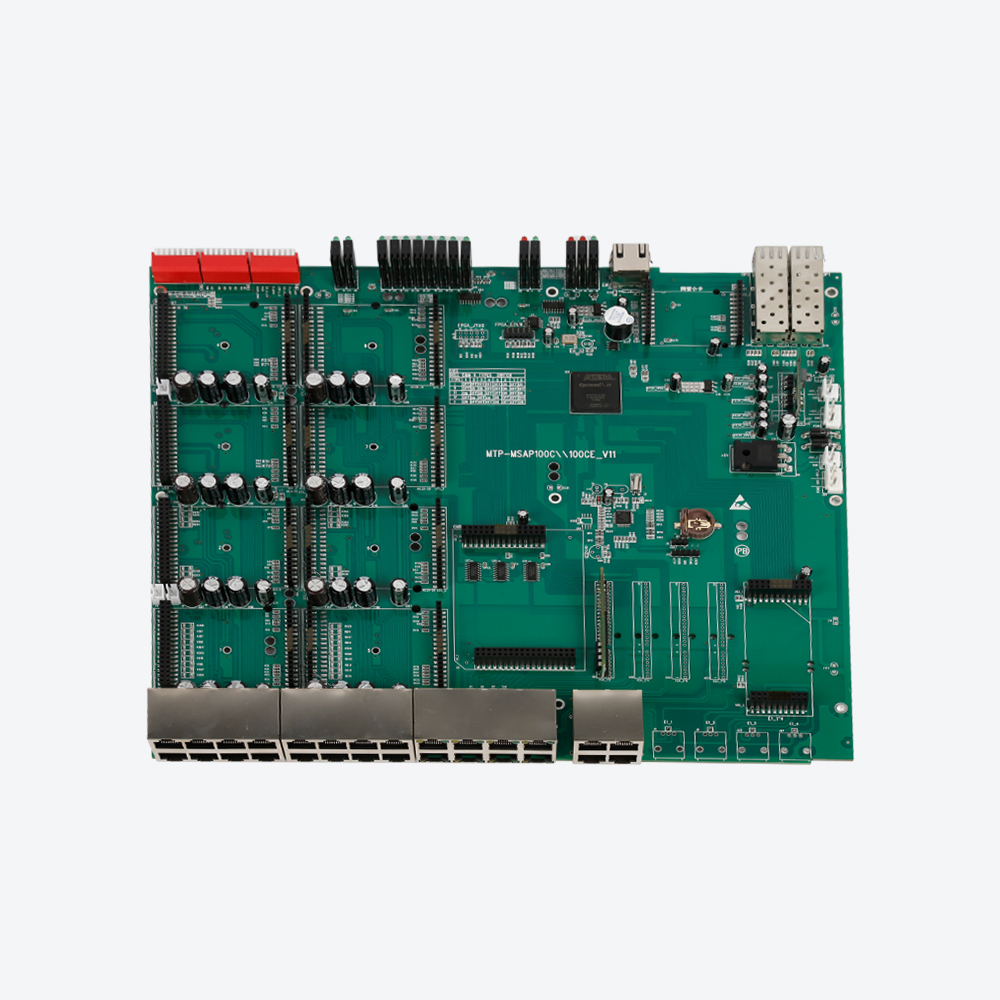Time:2022-07-18 Visit:
Principle 1: PCB clock frequency exceeds 5MHZ or signal rise time is less than 5ns, generally need to use multi-layer board design.
Reason: The signal loop area can be well controlled by using a multi-layer board design.
Principle 2: For the key wiring layers (the layers where the clock line, bus, interface signal line, radio frequency line, reset signal line, chip select signal line, and various control signal lines are located) should be adjacent to the complete ground plane, preferably two places between planes.
Reason: The key signal lines are generally strong radiation or extremely sensitive signal lines, and wiring close to the ground plane can reduce the area of the signal loop, reduce its radiation intensity or improve its anti-interference ability.


Principle 3: For single-layer boards, both sides of key signal lines should be grounded;
Reason: The two sides of the key signal are grounded, on the one hand, it can reduce the area of the signal loop, and on the other hand, it can prevent the crosstalk between the signal line and other signal lines.
Principle 4: For a double-layer board, there should be a large area of ground on the projection plane of the key signal lines, or the same as the single-layer board, and the ground should be punched.
Reason: the same as the key signal of the multi-layer board is close to the ground plane
Principle 5: In a multi-layer board, the power plane should be retracted by 5H-20H relative to its adjacent ground plane (H is the distance between the power source and the ground plane).
Reason: Retracting the power plane relative to its return ground plane can effectively suppress the edge radiation problem.
Principle 6: The projected plane of the routing layer should be within the area of its reflow plane layer.
Reason: If the wiring layer is not in the projection area of the reflow plane layer, it will cause edge radiation problems and increase the area of the signal loop, resulting in increased differential mode radiation.
Principle 7: In the multi-layer board, the TOP and BOTTOM layers of the single board should not have signal lines larger than 50MHZ as much as possible.
Reason: It is better to walk the high frequency signal between the two plane layers to suppress its radiation to space.
Principle 8: For a single board with a board-level operating frequency greater than 50MHz, if the second layer and the penultimate layer are wiring layers, the TOP and BOOTTOM layers should be grounded with copper foil.
Reason: It is better to walk the high frequency signal between the two plane layers to suppress its radiation to space.
Principle 9: In a multi-layer board, the main working power plane of the single board (the most widely used power plane) should be in close proximity to its ground plane.
Reason: The adjacent power plane and ground plane can effectively reduce the loop area of the power circuit.
Principle 10: In a single-layer board, there must be a ground wire close to and parallel to the power trace.
Reason: reduce the area of the power supply current loop.
Principle 11: In a two-layer board, there must be a ground wire adjacent to the power trace and parallel to it.
Reason: reduce the area of the power supply current loop.
Principle 12: When designing in layers, try to avoid the arrangement of adjacent wiring layers. If the adjacent wiring layers cannot be avoided, the layer spacing between the two wiring layers should be appropriately increased, and the layer spacing between the wiring layers and their signal loops should be reduced.
Cause: Parallel signal traces on adjacent routing layers can cause signal crosstalk.